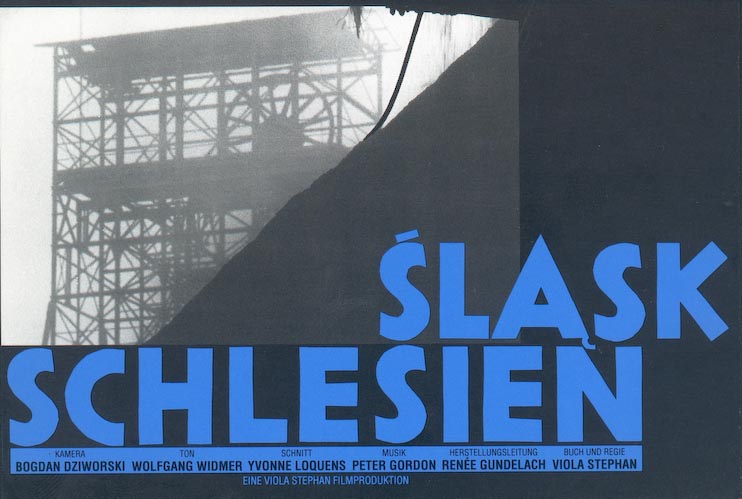SILESIA
Śląsk/Schlesien
D 1994 , 80 min, 35mm, colour
Photographed by Bogdan Dziworski, Victor Kossakovsky
Produced by Viola Stephan Filmproduktion
Premiere: Cinema "Śląsk" in Wroclaw (Breslau),Hof International Filmfestival
Digital restoration: 4K Scan / DCP by PHAROS Munich, 2024
Distribution: Arsenal Distribution, Berlin

About the Film:
A cinematic view of a region in Lower Silesia, captured after the opening of the borders and the end of the Cold War—without any claim to historical revisionism—showing both Poles and Germans in the concrete, present-day contexts of life in post-communist Poland.
Filming took place in Milków, a village at the foot of the Giant Mountains, as well as in Kamienna Góra (formerly Landeshut) and Wałbrzych (formerly Waldenburg), during the autumn and winter of 1993/94.
A documentary about Silesia—a region once known for its distinct character—must move beyond the burden of symbolic projections. During the Cold War, Silesia was excluded from both German and Polish consciousness. You could meet Silesians everywhere, yet Silesia itself no longer existed.
Only as a “lost” land did Silesia retain any kind of geopolitical shape. Among refugees and expellees, it took on an idealized, often romanticized form in their conversations.
A cinematic view of a region in Lower Silesia, captured after the opening of the borders and the end of the Cold War—without any claim to historical revisionism—showing both Poles and Germans in the concrete, present-day contexts of life in post-communist Poland.
Filming took place in Milków, a village at the foot of the Giant Mountains, as well as in Kamienna Góra (formerly Landeshut) and Wałbrzych (formerly Waldenburg), during the autumn and winter of 1993/94.
A documentary about Silesia—a region once known for its distinct character—must move beyond the burden of symbolic projections. During the Cold War, Silesia was excluded from both German and Polish consciousness. You could meet Silesians everywhere, yet Silesia itself no longer existed.
Only as a “lost” land did Silesia retain any kind of geopolitical shape. Among refugees and expellees, it took on an idealized, often romanticized form in their conversations.

Viola Stephan filmed in the village of Milków in Lower Silesia—not to stir up border disputes, but to meet people who had ended up there after the war and those who had never left.
Traditions are maintained: the Polish miners’ brass band, the women’s choir, the churchgoers—they do not think in patriotic terms.
The film Slask/Silesia finds its poetry in the pragmatism of the moment: it shows abandoned places, decaying industrial sites, the landscape, and living people who describe their present and recall their past.
The film captures these moments of life without emotionally charging them through commentary. It shows how people in today’s Silesia eat, dance, make music, and bury their dead.
It portrays the everyday life connections of a Polish-German world in an eastern border region on the edge of the European Economic Community.
The film takes the documentary genre seriously and makes clear that today’s Silesia defines itself more through present-day realities than through what once was.
Traditions are maintained: the Polish miners’ brass band, the women’s choir, the churchgoers—they do not think in patriotic terms.
The film Slask/Silesia finds its poetry in the pragmatism of the moment: it shows abandoned places, decaying industrial sites, the landscape, and living people who describe their present and recall their past.
The film captures these moments of life without emotionally charging them through commentary. It shows how people in today’s Silesia eat, dance, make music, and bury their dead.
It portrays the everyday life connections of a Polish-German world in an eastern border region on the edge of the European Economic Community.
The film takes the documentary genre seriously and makes clear that today’s Silesia defines itself more through present-day realities than through what once was.
